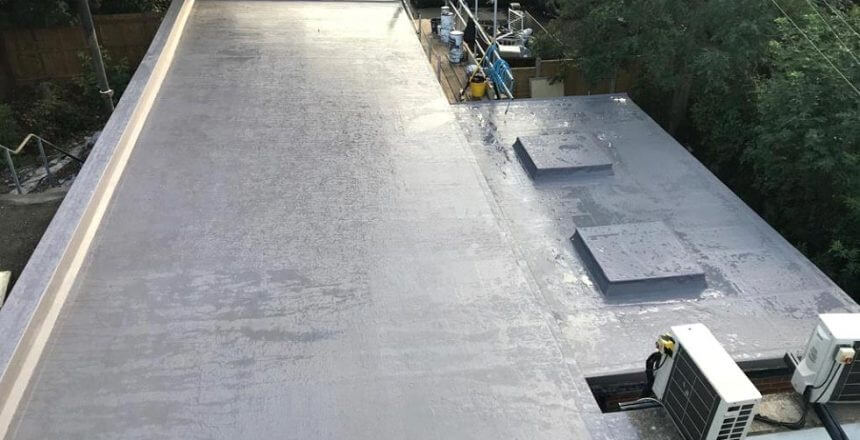The roofing industry is undergoing a rapid transformation. In recent years, there has been a shift from traditional building materials to advanced and environmentally-friendly alternatives. One such alternative that has seen an increase in popularity is fibreglass flat roofs.
There are types of roofs that are an option for a home or building. There is the traditional slate roof made from stone and then covered with layers of different-sized tiles. Then there is the fibreglass roof, which usually comes in a single sheet but comes in panels. Fibreglass roofs are becoming more popular because they’re cheaper to install and can also provide a more aesthetic appeal by diffusing harsh sunlight.
Traditional Slate Roofs and Fibre Glass Roofs
Traditional Slate Roofs
A slate roof is a type of roofing material that people use traditionally in the UK, but it is now mostly replaced by other roofing-type materials. Slate roofs are still in use today, and you can find them typically on older buildings or newer ones where the style is considered traditional.
Fibre Glass Flat Roofs
In the UK alone, research shows that there is an estimate of around 1,000 different uses for fibreglass flat roofs in commercial buildings, including homes and factories. People use fibreglass roofs in the construction or repairing of the roofing as they have very high energy efficiency, they are cost-effective, and they last for decades.
The reason people prefer them in homes, offices, warehouses is to conserve natural resources. Fibreglass flat roofing has a low environmental impact, and it is why people consider it to be green as well as sustainable.
The Difference Between Slate Roofs and Fibre Glass Roofs
The primary difference between traditional slate roofs and fibreglass roofs is their processing: companies make traditional slate roofs from layers of slivered stone mixed with mortar before being laid upon each other in a successive pattern. The construction of fibreglass flat roofs is a process that will require specialised roofers to complete.
Manufacturers make slate roofs from single pieces whereas fibreglass roofs are hundreds of thin, flexible sheets that bond together. Slate roofs are more traditional, while fibreglass flat roofs offer a more modern design. However, both slate and fibreglass roof are available in different colours and textures to help create unique buildings in the UK.
The Benefits and Positives of Fibre Glass Roofs
The main benefit of fibreglass flat roofs is that they can be installed faster and require less maintenance than slate roofs. A fibreglass roof is a durable, attractive, and waterproof roofing option for homes. Liquid Roofing Solutions uses fibreglass roofs in repairing residential or commercial buildings roofs. Fibreglass roofs are lightweight and one person can install them. Companies use fibreglass roofs to save money and get their roofs up and running quickly, which allows for increased productivity.
Liquid roofing only needs to be cleaned when it becomes dirty or has accumulated debris on it.
The Installation and Maintenance Service Offered by Liquid Roofer in the UK.
Liquid Roofer is a company that focuses on installing and maintaining a range of roofing solutions for residential and commercial properties in the UK. With over 20 years of experience in the industry, Liquid Roofers can offer a cost-effective repair service for their customers.
We use a range of roofs products made with the latest manufacturing techniques available. Our experienced team can provide you with expert advice on which product would be suitable for your project. Liquid Roofer offers fibreglass roofs as their standard product for new builds as well as extensions or old builds. A liquid flat roof is cost-effective and environmentally friendly.
Contact us today to discuss your fibre glass roof installation and maintenance projects for your home or business today.

